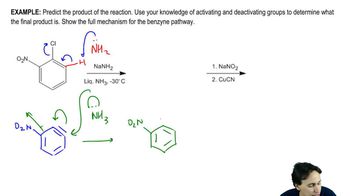Predict the products from the reactions of the following amines with sodium nitrite in dilute HCl.
(d) aniline
 Verified step by step guidance
Verified step by step guidance Verified video answer for a similar problem:
Verified video answer for a similar problem:



 6:59m
6:59mMaster Replacement Reactions with a bite sized video explanation from Johnny
Start learning